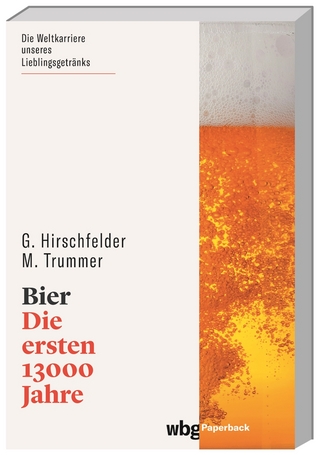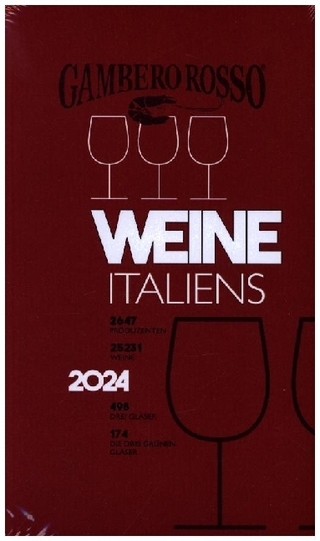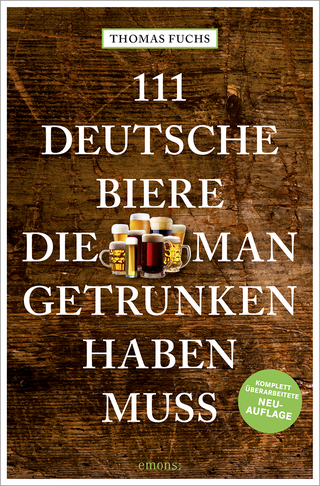
Alcoholic Beverages
Woodhead Publishing Ltd (Verlag)
978-0-08-101652-7 (ISBN)
John Piggott is Director of the ARC Centre of Excellence in Population Ageing Research (CEPAR), and of the Australian Institute for Population Ageing Research at the University of New South Wales, Australia, where he is Scientia Professor of Economics and also holds an ARC Australian Professorial Fellowship. He serves as book review editor of the Cambridge journal, the Journal of Pension Economics and Finance, as an Associate Editor of the Journal of the Economics of Aging, and has recently been appointed to the editorial board of the Journal of Retirement.
Contributor contact details
Woodhead Publishing Series in Food Science, Technology and Nutrition
Preface
Part I: Sensory evaluation: principles and application to alcoholic beverages
Chapter 1: Overview of sensory perception
Abstract:
1.1 Introduction
1.2 The common senses
1.3 Oro-sensory systems
1.4 Sense of smell
1.5 Integration of sensory information
1.6 Mechanisms of perception, cognition and emotion
1.7 Sensory perception, satiation and food reward
1.8 Sensory perception and learning of preferences
1.9 Conclusion and future trends
Chapter 2: Sensory quality control and assurance of alcoholic beverages through sensory evaluation
Abstract:
2.1 Introduction
2.2 Sensory quality concerns and issues in the alcohol beverage industry
2.3 Similarities and differences in alcoholic beverages
2.4 Factors influencing the development of off-flavors and taints
2.5 The use of instrumental methods to aid sensory quality evaluations
2.6 Future trends in quality evaluations
2.7 Additional sources of information
2.8 Conclusions
Chapter 3: Principles of sensory shelf-life evaluation and its application to alcoholic beverages
Abstract:
3.1 Introduction: principles of sensory evaluation in shelf-life testing
3.2 General principles of shelf-life estimation
3.3 Microbial analysis
3.4 Sensory discrimination tests
3.5 Quantitative descriptive tests
3.6 Sensory term reduction
3.7 Sensory profile changes in alcoholic beverages
3.8 Consumer acceptability testing
3.9 Instrumental analysis
3.10 Accelerated storage tests
3.11 Future trends
Chapter 4: Sensory methods for product development and their application in the alcoholic beverage industry
Abstract:
4.1 Introduction
4.2 Perceptual maps
4.3 Temporal dominance of sensation (TDS)
4.4 Prediction of perceived astringency induced by phenolic compounds in alcoholic beverages
4.5 Future trends
Chapter 5: Gas chromatography-olfactometry of alcoholic beverages
Abstract:
5.1 Introduction
5.2 Principles of gas chromatography-olfactometry (GC-O)
5.3 Applications of GC-O in the flavour analysis of alcoholic beverages
5.4 Conclusions
Part II: Fermented products
Chapter 6: Beer: production, sensory characteristics and sensory analysis
Abstract:
6.1 Introduction
6.2 The origins of beer flavour
6.3 Off-flavours and their origin
6.4 Sensory analysis practice in the brewing industry
6.5 Future trends
Chapter 7: Fortified wines: styles, production and flavour chemistry
Abstract:
7.1 Introduction to fortified wines
7.2 Comparison of styles and types of fortified wines and their production methods
7.3 Flavour chemistry and sensory properties
7.4 Legal aspects and health considerations
7.5 Future trends
Chapter 8: Sake: quality characteristics, flavour chemistry and sensory analysis
Abstract:
8.1 Introduction
8.2 Quality of sake
8.3 Flavour and aroma of sake
8.4 Sensory evaluation method
8.5 Future trends
8.6 Sources of further information
8.7 Acknowledgement
Chapter 9: Table wines: sensory characteristics and sensory analysis
Abstract:
9.1 Introduction
9.2 Categories of table wines
9.3 Flavor chemistry and sensory aspects
9.4 Sensory analysis applied to table wines
9.5 Future trends
Part III: Distilled products
Chapter 10: Anise spirits: types, sensory properties and sensory analysis
Abstract:
10.1 Overview of anise spirits (pastis, ouzo, tsipouro)
10.2 History of anise spirits
10.3 Raw materials and production process
10.4 Description of major variants
10.5 Overview of flavour chemistry and sensory properties
10.6 Description of sensory analysis practice in the anise spirit industry
10.7 How consumer research is managed and executed
10.8 Future trends
Chapter 11: Cognac: production and aromatic characteristics
Abstract:
11.1 Raw materials, production process and major variants
11.2 Overview of flavour chemistry and sensory properties
11.3 Sensory analysis practice in the industry
11.4 Consumer research: creation of the Cognac aroma wheel
Chapter 12: Gin: production and sensory properties
Abstract:
12.1 Introduction
12.2 Gin production
12.3 Flavour chemistry
12.4 Sensory properties of gin and sensory analysis practice in the industry
12.5 Future trends
Chapter 13: Grape-based brandies: production, sensory properties and sensory evaluation
Abstract:
13.1 Introduction
13.2 Brandy production
13.3 Types of brandies
13.4 Understanding brandy flavour
13.5 Sensory evaluation of brandy
13.6 Brandy and consumer research
13.7 Future trends
Chapter 14: Grappa: production, sensory properties and market development
Abstract:
14.1 Introduction
14.2 Production process
14.3 Chemical composition and sensory properties
14.4 Grappa categories
14.5 Grappa tasting
14.6 Grappa and the consumer
14.7 New product development
14.8 Future trends
Chapter 15: Moutai (Maotai): production and sensory properties
Abstract:
15.1 Historical background
15.2 Ecological environment
15.3 Production of Kweichow Moutai
15.4 Sensory properties and flavor chemistry
15.5 Marketing
15.7 Acknowledgements
Chapter 16: Pisco: production, flavor chemistry, sensory analysis and product development
Abstract:
16.1 Introduction
16.2 Pisco production
16.3 Pisco flavor chemistry
16.4 Main sensory properties of Pisco
16.5 Sensory analysis practice in the Pisco industry
16.6 Consumer research and product development in the Pisco industry
16.7 Future trends
16.8 Acknowledgments
Chapter 17: Sugar cane spirits: cachaça and rum production and sensory properties
Abstract:
17.1 Introduction
17.2 Raw materials
17.3 Fermentation
17.4 Distillation
17.5 Maturation
17.6 Cachaça and rum: similarities and differences
17.7 Sensory quality of cachaça and rum
17.8 The challenge of new markets
17.10 Acknowledgement
Chapter 18: Tequila and mezcal: sensory attributes and sensory evaluation
Abstract:
18.1 Introduction
18.2 Origin of the sensory attributes of tequila and mezcal
18.3 Sensory evaluation of tequila and mezcal from a research perspective
18.4 Application of sensory evaluation in industry
18.5 Sources of further information
18.6 Acknowledgements
Chapter 19: Whiskies: composition, sensory properties and sensory analysis
Abstract:
19.1 Introduction
19.2 The influence of raw materials and production processes on sensory character
19.3 Whisky composition and sensory properties
19.4 Sensory analysis in the whisky industry
19.5 Future trends
Part IV: Consumer research methods: principles and application to alcoholic beverages
Chapter 20: Consumer research in the wine industry: new applications of conjoint measurement
Abstract:
20.1 Background: understanding the mindset of the consumer
20.2 Experiments and statistical tools
20.3 Conjoint measurement (CM): experiments by mixing together ideas
20.4 Applying CM to wine: traditional approaches
20.5 Understanding white wine using experimental design of ideas
20.6 The case of red wine
20.7 Next generation thinking: price and emotion/feeling and its application to dessert wine
20.8 Concluding remarks
Chapter 21: Preference mapping: principles and potential applications to alcoholic beverages
Abstract:
21.1 Introduction
21.2 Conducting central location trials (CLTs)
21.3 Analyses
21.4 Recent developments in preference mapping
21.6 Acknowledgement
Index
| Erscheinungsdatum | 27.07.2016 |
|---|---|
| Reihe/Serie | Woodhead Publishing Series in Food Science, Technology and Nutrition |
| Verlagsort | Cambridge |
| Sprache | englisch |
| Maße | 156 x 234 mm |
| Gewicht | 720 g |
| Themenwelt | Sachbuch/Ratgeber ► Essen / Trinken ► Getränke |
| Technik ► Lebensmitteltechnologie | |
| Wirtschaft ► Betriebswirtschaft / Management ► Marketing / Vertrieb | |
| ISBN-10 | 0-08-101652-2 / 0081016522 |
| ISBN-13 | 978-0-08-101652-7 / 9780081016527 |
| Zustand | Neuware |
| Haben Sie eine Frage zum Produkt? |
aus dem Bereich


